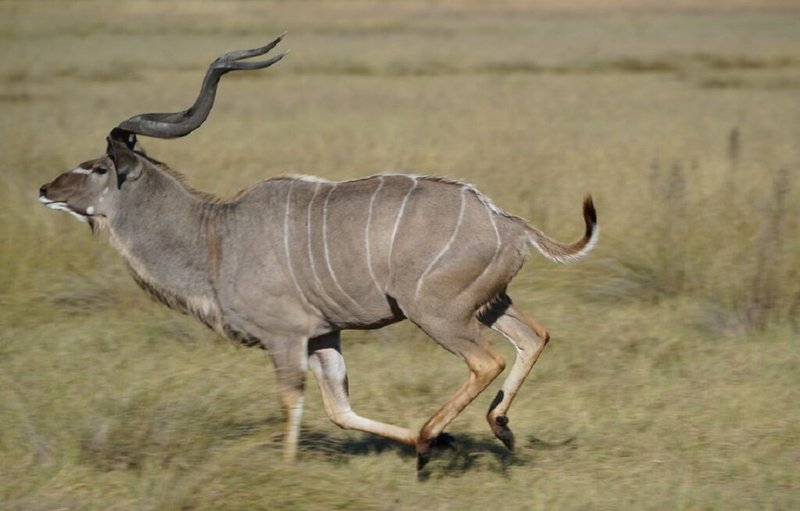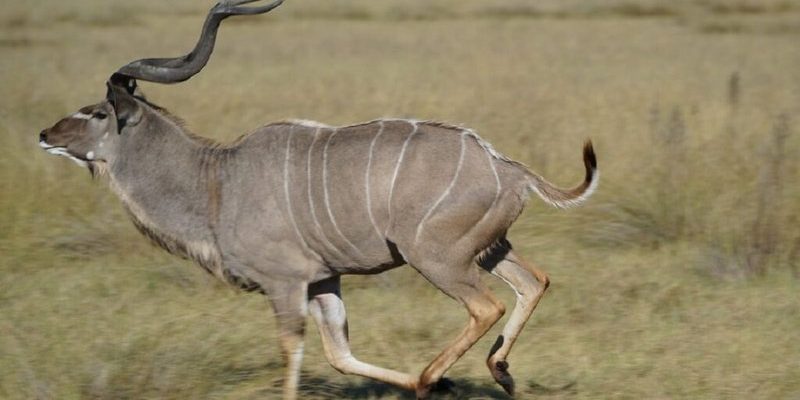
To understand their intelligence, we’ll explore their cognitive abilities, social behaviors, and the intriguing ways they interact with their environment. By the end of this discussion, you might just come away with a newfound appreciation for these animals, as well as a better understanding of their fascinating behavior. So let’s dive into the world of kudu!
Cognitive Abilities of Kudu
Kudus have an impressive set of cognitive skills that help them thrive in their natural habitats. They rely on their intelligence more than you might think. For starters, their brains are relatively large compared to their body size, which points to a certain level of adaptability and problem-solving ability. This means they can analyze situations and make quick decisions—skills that are crucial when avoiding predators.
One interesting aspect of their intelligence is their keen sense of observation. Kudu are vigilant animals, always watching for dangers. They can spot movement and changes in their environment from a distance. You might find this fascinating: their ability to recognize patterns can help them anticipate threats. For example, if they notice a particular sound often leads to danger, they’ll remember it and react accordingly in the future.
Another cognitive strength of kudu is their memory. These animals can recall the locations of food sources and watering holes, which is vital for survival in the wild. Imagine trying to remember where your favorite coffee shop is in a busy city—it’s a bit like that, but on a much larger scale. Being able to remember these vital spots can mean the difference between life and death in the wild.
Social Behavior and Communication
Kudus are social animals, often found in small herds that consist of females and their young. Males tend to be more solitary, especially as they grow older. But when they’re in a group, communication plays a huge role in their social interactions. You might think of them as the “squad” of the savanna, where teamwork and understanding are key.
The primary way kudus communicate is through body language and vocalizations. They can express various emotions, like alertness or calmness, through their posture and movements. For instance, when they feel threatened, a kudu might stand completely still, ears perked up, as if they’re freezing in place to avoid detection. It’s almost like when we hold our breath in suspense, waiting to see what happens next.
Vocalizations also play a role in their social behavior. Kudus make sounds ranging from soft grunts to loud whistles. These calls can convey important information about food sources or potential dangers in the area. Imagine being part of a lively conversation with friends; kudus do something similar, using their voices to stay connected with one another.
Adaptations to Their Environment
Kudus are not just smart; they are also incredibly well-adapted to their surroundings. These adaptations help them find food and avoid threats in their natural habitats, which often include wooded savannas and bushy areas. Their high, long legs allow them to navigate tricky terrain with grace, while their large bodies provide the strength to push through thick brush when needed.
One of the most interesting adaptations is their coloration. The kudu’s markings, with their beautiful stripes and spots, help them blend into the environment. Think of them as nature’s camouflage artists! This adaptation isn’t just for style—it helps them hide from predators like lions and leopards. When they stand still among the trees and grasses, they can easily go unnoticed.
Moreover, kudus have an excellent sense of smell, which is crucial for detecting predators and finding food. Their noses can pick up scents from far away, allowing them to be aware of their surroundings without having to rely solely on sight. It’s almost like having an extra sensory tool at their disposal, making their survival strategies even more effective.
Problem-Solving Skills
One of the standout cognitive features of kudu is their problem-solving skills. These skills shine through when they face challenges in the wild. For example, when foraging for food, they often have to figure out how to access hard-to-reach leaves or branches. Rather than just trying to jump or stretch ineffectively, they’ll often look for creative angles or alternative routes.
Their problem-solving abilities can also be seen in how they navigate potential threats. If a kudu senses danger, it might try to find a way to outsmart the predator. This could mean darting into nearby woods or making sudden turns to evade a pursuing animal. Think of it as an elegant dance—a mix of agility and strategy.
Interestingly, researchers have started to study these problem-solving techniques more closely. Some findings suggest that kudus can learn from each other, picking up skills from observing other animals in their herd. It’s similar to how people might watch a skillful friend tackle a challenge, then try it themselves. This ability to learn socially may contribute to their survival and adaptability in the wild.
Threats and Survival Strategies
Like many animals, kudus face various threats in their natural habitat, including predators and habitat loss. As intelligent creatures, they’ve developed effective survival strategies to cope with these challenges. Understanding these strategies is essential for appreciating their intelligence.
One of their primary defense mechanisms is their ability to stay alert and aware of their surroundings. Their large ears can rotate, allowing them to pick up sounds from various directions. This heightened awareness is crucial—I mean, imagine walking through a busy street while trying to avoid cars!
In addition, kudus often use their size and speed to escape. They can run up to 60 km/h (about 37 mph) when frightened, which gives them a significant advantage over many predators. This sprinting ability, combined with their knowledge of the terrain, allows them to escape quickly when danger is near.
Another fascinating aspect of their survival strategy is their choice of habitat. Kudus prefer areas with dense bush and trees. This choice provides them with cover from predators and easy access to food sources. It’s like having a cozy home base where they can feel safe and secure, while also being close to snacks.
So, how smart is a kudu? Honestly, these creatures are more than just beautiful animals gracefully roaming the savanna; they possess a range of cognitive abilities that help them adapt, survive, and thrive in the wild. From their problem-solving skills to their social interactions, kudus demonstrate a remarkable level of intelligence that is often overlooked.
By understanding their cognitive abilities and behaviors, we can deepen our appreciation for these animals and the vital roles they play in their ecosystems. Kudu intelligence is a reminder that every creature, no matter how big or small, has its strengths and strategies that contribute to the richness of our natural world. Next time you ponder animal intelligence, don’t forget to give kudus their due credit!

